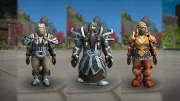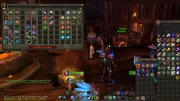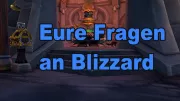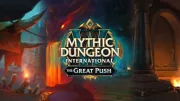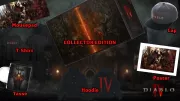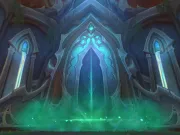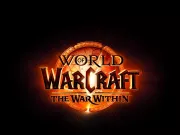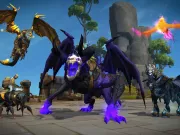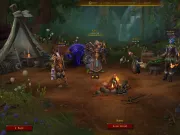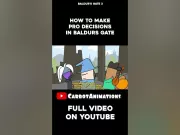
Der aktuell auf dem öffentlichen Testserver von Overwatch vorhandene Patch 1.25 wird bei seinem Erscheinen in einigen Wochen unter anderem ein brandneues Suchtool für Gruppen mit sich bringen, welches es daran interessierten Personen ermöglichen wird, bereits vor dem Start einer Partie ein für sie optimales Team zusammenzustellen. Um den Spieler nun bereits im Vorfeld zu erklären, wie genau dieses kommende Feature eigentlich funktioniert, veröffentlichte Game Designer Scott Mercer in der vergangenen Nacht netterweise einen umfangreichen Beitrag zu diesem Thema in den Foren. In diesem Beitrag ging dieser Entwickler dabei dann allerdings nicht nur auf diese kommende Neuerung ein, sondern er nutzte diesen Text auch noch dafür, um ein wenig über den Einfluss einer Gruppe auf das Matchmaking, die Siegraten der einzelnen Gruppenzusammenstellungen und einige in der Community umhergehende Irrtürmer zu sprechen. Wer sich nicht wirklich für die Erklärungen und Absichten des Entwicklerteams interessiert, der findet folgend eine kurze Zusammenfassung der in diesem Text vorhandenen Daten und Siegraten. Einige interessante Informationen aus dem Beitrag: Das Spielen in einer Gruppe hat keine negativen Auswirkungen darauf, wie sich das Spielniveau nach einer Partie verändert. Nur 16% aller Partien sind nur mit Solo-Spielern gefüllt. Die am häufigsten auftretende Kombination an Spielern einer Partie ist 2,1,1,1,1 vs. 2,1,1,1,1. Diese Aufstellung taucht in 28% aller Runden auf. Wer sich in einem nur aus Solo-Spielern bestehenden Team befindet, der wird in 73% aller Fälle nur gegen andere Teams mit Solo-Spielern antreten. In 24% der Fälle kämpft solch ein Team gegen einen Aufbau von 2,1,1,1,1 t. Die restlichen 3% beinhalten Gegner mit drei oder mehr Spielern in einer Gruppe. Zu Zwei treten Spielern in 74% der Fälle gegen andere 2,1,1,1,1 Teams an. 14% gegen 1,1,1,1,1,1, 8% gegen 3,1,1,1 und 4% gegen 4 oder mehr Spieler aus einer Gruppe. Als feste 6er Gruppe tritt das Team in 92% aller Partien gegen eine andere Gruppe mit sechs Spielern an. Der Matchmaker von Overwatch versucht immer faire Partien auszurichten. Die Statistiken weiter oben zeigen, dass das Ganze recht gut funktioniert. Der Matchmaker macht nur dann unfaire Kompromisse, wenn kaum Spieler online sind und die Wertungen der angemeldeten Teilnehmer sehr weit auseinanderliegen. Der Matchmaker von Overwatch beinhaltet eine Limitierung, die dafür sorgt, dass zu einseitige Partien nicht mehr länger erstellt werden können. Die Siegchance eines Teams beträgt immer mindestens 40%. Nur aus Solo-Spielern bestehende Teams sollten nur einmal in 1150 Partien gegen ein reines 6er Team antreten. In solch einem Match hat das Team mit Solo-Spielern eine Siegchance von ca. 41%. Teams mit sechs festen Spielern haben die höchste Siegrate von allen möglichen Teamzusammenstellungen. Solch ein Team gewinnt im Durchschnitt in 52.88% aller Fälle. Groups and Matchmaking in Overwatch The Looking for Group tool in 1.25 is an exciting new in-game feature that gives players more control over their online play experience in Overwatch. It allows players to find like-minded or similarly skilled individuals who want to work together. Groups can lead to better team play with less negativity and, ultimately, more fun. Since Overwatch is at its very core a team game, there’s really no better way to play. We’ve seen some reluctance from the community when it comes to grouping, especially in Competitive Play. There are a lot of misconceptions about how grouping is handled by the matchmaker, as well as how grouping affects Skill Rating changes. I want to address some of these by explaining in detail how our matchmaking system handles groups, and also examine the effects of grouping on win rates. I’ll include quite a bit of data and statistics to help with the explanations. The first and maybe most common misconception I want to correct is the belief that the Competitive Play system decreases your SR gains and increases your SR losses when playing in a group. The simple answer here is that there’s no SR penalty based on your group status. It doesn’t matter if you’re solo, grouped with one other person, or in a full group of six. If you are a 2800 SR player grouped with five other 2800 SR players, the SR change after a win or loss is the exact same as if you played the game solo with five other solo 2800 SR players. We also do not artificially inflate the SR of the players in a group when finding matches. There is simply no penalty at all for the purposes of calculating SR and matchmaking. There are many other reasons for the SR gained or lost after a game to differ in magnitude that have nothing to do with grouping: What was the quality of the enemy team and your predicted win chance? You gain more on a win if your predicted win chance was <50%. You gain less on a win if your predicted win chance was >50%. Are you playing consistently? New accounts or accounts that have been inactive will see larger magnitude changes both upwards and downwards. This settles back to normal as you play additional games. Did your 3000+ SR recently decay due to inactivity? If this happened, you’ll gain more SR on a win until you get back to your “undecayed” SR. Are you a Platinum-tier player or below? If you performed particularly well or worse than what is considered a typical performance during a match, then there’s a small SR modification to reflect that. Is your current SR really high? Your SR increases less on a win than it decreases on a loss as your SR approaches the systemic limit of 5000. Now let’s talk about groups and matchmaking a bit. Interestingly enough, there’s actually more grouping going on than you might think! For the next set of data, we’re going to look at all competitive games from February 1st up to May 28th of this year. Only 16% of all games purely consisted of solo players. The most common match composition is 2,1,1,1,1 vs. 2,1,1,1,1, which represents 28% of the all matches. If you are in a full team of solo players, 73% of those matches were against another team of solo players and another 24% were against a 2,1,1,1,1 team composition. Only 3% of the enemy teams were groups of three or more players. If you’re in a duo, 74% of your matches are against other 2,1,1,1,1 teams, 14% against 1,1,1,1,1,1 teams, and 8% against 3,1,1,1 teams. Only 4% of the enemy teams you faced had groups of four players or more. If you’re in a full six player group, 92% of your matches are against the combination of other six player groups; 5,1 teams; 4,2 teams; 3,3 teams; and 2,2,2 teams. The matchmaker was designed to try and create games with equivalent-sized groups, especially for solo players, and these statistics show that it’s doing a pretty decent job. We believe that games with equivalent groups create the fairest possible experience, and fair games create the best chance of players having a fun experience. When the matchmaker does compromise, it’s usually during off-hours when there aren’t as many available players, as well as at the lowest and highest extremes of SR. There are limits to how much we compromise, however. Several months back we implemented a restriction that prevents the matchmaker from creating games that are severely one-sided. Whenever it wants to make a game, it calculates an expected win percentage for each team based on the SR of all the players. If one of the teams doesn’t have at least a predicted 40% win rate, then we simply don’t create the game. Even if you do end up in game where your predicted win rate is close to 40%, it’s important to remember that it also means that your SR will drop less when you lose, and you will gain more SR if you win. To help explain this further, here’s a simplified example to help explain how predicted win percentage affects your SR. As an example, let’s say you play 10 games in a row and all 10 games only have a predicted 40% win rate. If you win 4 of those 10 matches, your SR be the same as it started. Now, let’s look at all teams consisting of all solo players. They play against other all-solo teams 73% of the time, with a 50% win rate. Meanwhile, they’ll very seldomly be matched against a full six-stack (only once in every 1150 games) and they’ll have a 41% win rate. That percentage isn’t great, but it doesn’t happen often, and 41% is NOT unwinnable. If you then combine all the separate chances to encounter all the other possible enemy team compositions and their win rates, then the solo-only team composition has a total observed win rate of 49.5%. However, when you decide to queue for a competitive game as a solo player, we don’t only place you in all-solo compositions. Sometimes, you’re in a 2,1,1,1,1 composition which has an overall observed win rate of 50.03%. Other times, you’re in a 2,2,1,1 composition with a 49.46% win rate, or a 3,2,1 comp with a 49.93% win rate. All of the possible combinations considered, the combined win rate for solo players end ups being 49.94%. That’s very close to the perfectly fair value of 50%, which means that having groups and solo players queuing together has nearly no effect on a solo player’s win rate. Among all possible team compositions, the one with the highest win rate is the full team of six players. If we again take into account how often the six-player team composition plays other compositions (and close to 84% are against teams with at least a four-, five-, or six-player group) then they only have an observed win rate of 52.88%. So, there is a very modest advantage to playing in a six-stack. All the other composition possibilities have closer to 50% win rates. That’s a lot of math and data to demonstrate that playing solo or playing with a group doesn’t have much of a global systemic effect on your win rate or SR! That being the case, let’s talk about how grouping DOES provide a host of advantages that definitely make playing Overwatch more FUN. The greatest benefit of grouping is the simplest: You get to play together with your friends! There’s really no better way to play Overwatch. You can laugh at each other’s jokes and silly plays, celebrate together when someone does something awesome, and just enjoy hanging out while pushing a payload or defending a control point. Losing doesn’t feel so bad and winning feels even better. With the new Looking for Group tool, there are now even more opportunities to play as a group, find new friends, and have a better play experience. Whether you create or join a group, the tool allows you to find other players who share your goals. We also sort the groups in the LFG tool by SR and connection quality, so you can more easily find the best group for you. Grouping with like-minded players gives you a great head start to a more positive experience. Grouped players are often more willing to positively communicate with each other. Grouped players are better able to resolve conflicts concerning player roles and team compositions. When part of a group, you’re better able to handle adversity. All teams lose fights and experience setbacks during a game. Grouping helps make players more resistant to catastrophic tilt and go on to recover and win fights and games in the future. If you find new people that made your Overwatch matches more fun, you can add them to your friends list and play with them again. In spite of all this, some players think that that grouping isn’t a good idea. They’re afraid of being matched against other groups who may have been playing together for longer, and thus have greater synergy. There are several issues with this line of reasoning. Most groups don’t play very long together with the exact same lineup. It’s actually pretty rare for the same group of six players to play together for a long time. It’ll likely become even rarer with the Looking for Group feature, which makes it easier to create groups. Many of the benefits of grouping manifest soon after players come together. These benefits can increase the longer a group plays together, but they have diminishing returns. If two groups have similar mechanical skill and individual decision making, but one of the groups has a formed a synergy advantage from playing together for a long time, that advantage will naturally result in a higher SR. That means those two groups are not likely to be matched together because their players will have different Skill Ratings. Another reason players don’t group up is that it can be difficult to form groups. This is precisely the issue that the new Looking for Group tool addresses. If you enjoy playing tanks, you can find groups who really need you to hold the line. If you want to play with a very specific team composition, you can create a group that mandates it. The Looking for Group tool provides a lot of great flexibility, allowing you to both create your own or join other players’ groups. OK, that was a lot of words. For those who have read this far, I hope it was all helpful and educational. In conclusion, I’ll end with some bits of wisdom: Don’t worry too much about SR. Have fun, play to learn and improve, and your SR will rise over time. Playing games with other people is pretty awesome. The LFG tool helps make this happen, so give it a try. Be good to one another. Life’s too short. Thanks, everyone! (via)






